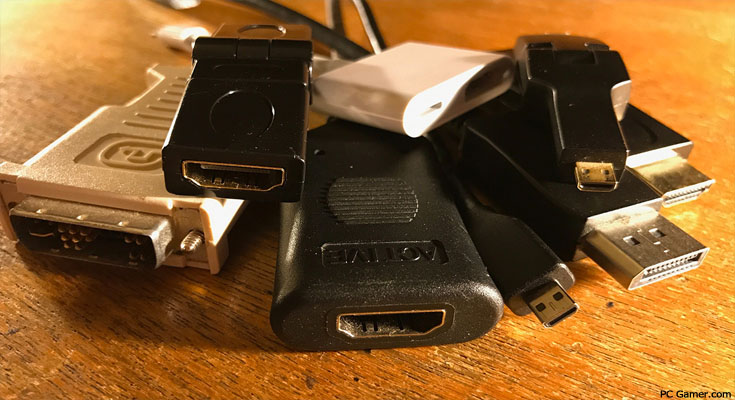If you’re anything like me, you’re sick of having to unscrew/re-screw VGA and DVI cables every time you move your monitor, or maybe you’re fed up with having to use a different cable for every single monitor you use in a multi-monitor setup. DisplayPort seems to be the answer to both these problems and more.
DisplayPort is a cable that was standardized by VESA (Video Electronics Standards Association) in May of 2006. The port looks like an HDMI port. The two cables share more than similar ports, though; they both do nearly the same thing. Both transfer video and audio singles with a single cable and both are poised as potential replacements for the aging DVI and VGA cables of yesteryear. Let’s explore why DisplayPort is ready to become the next big cable.
- Speed. DisplayPort is seriously fast. The current revision (1.2) can transfer information to your screen at a blazing 2.1 gigabytes per second. To put that in perspective, that’s enough speed to output to four 2560 x 1600 monitors. At once. That’s a huge amount of data to put through a single cable at once, and DisplayPort pulls it off with ease. This speed can be carried longer distances than conventional cables as well. DisplayPort pushes content at the speeds I mentioned before for 2 meters and can carry the signal to a 1080p monitor for more than 15 meters. Not only can it send signals fast, but it can also do it to multiple monitors and do it for huge lengths.
- Compatible. DisplayPort can directly transmit DVI and HDMI signals without the use of an adapter. It can also be converted VGA signals with an active adapter. This is essential for people to begin using it, as it allows them to buy a monitor without having to also buy a new video card, and vice-versa. This allows it to be used in unison with HDMI and legacy interfaces. Besides being able to transmit signals to other formats, DisplayPort already has a widening base of installations. Notably, Apple’s Macbook and Macbook Pro, and Cinema Display lines of products all come equipped with mini-DisplayPorts. Companies like Dell, LG, and HP ship monitors with DisplayPort, and Nvidia and ATI both ship video cards with it on board. The hardware is available and ready to oust the DVI and VGA legacy formats.
And finally…
- Looks. Because DisplayPort cables are much thinner and the port is much smaller than traditional sports, it allows monitors to be much thinner. It allows manufacturers to create chic new designs that have more appeal than older displays that still use DVI and VGA. While some ultrathin monitors already use a VGA or DVI port, they force the thick cables to stick out, which creates a mess.
Meanwhile, DisplayPort cords are much thinner and more flexible. This not only allows them to be hidden much easier than traditional cables, but it also lets them fit into more spaces.
The connector is also much more suited to slim designs. Instead of the standard heads that you have to screw on, DisplayPort cables use an attachment much more similar to USB. They also have a self-latching utility that ensures they don’t fall out.
DisplayPort is poised to oust the older DVI and VGA formats of the past. Soon, we’ll have a plethora of monitors that can be daisy-chained from just one cord, cables that are highly compatible with older formats to ease the transition, and a port that enables monitors to become thinner and less obtrusive. DisplayPort is a clear winner when it comes to the future of display technology, and it’s only a matter of time before that becomes more apparent in the market.





